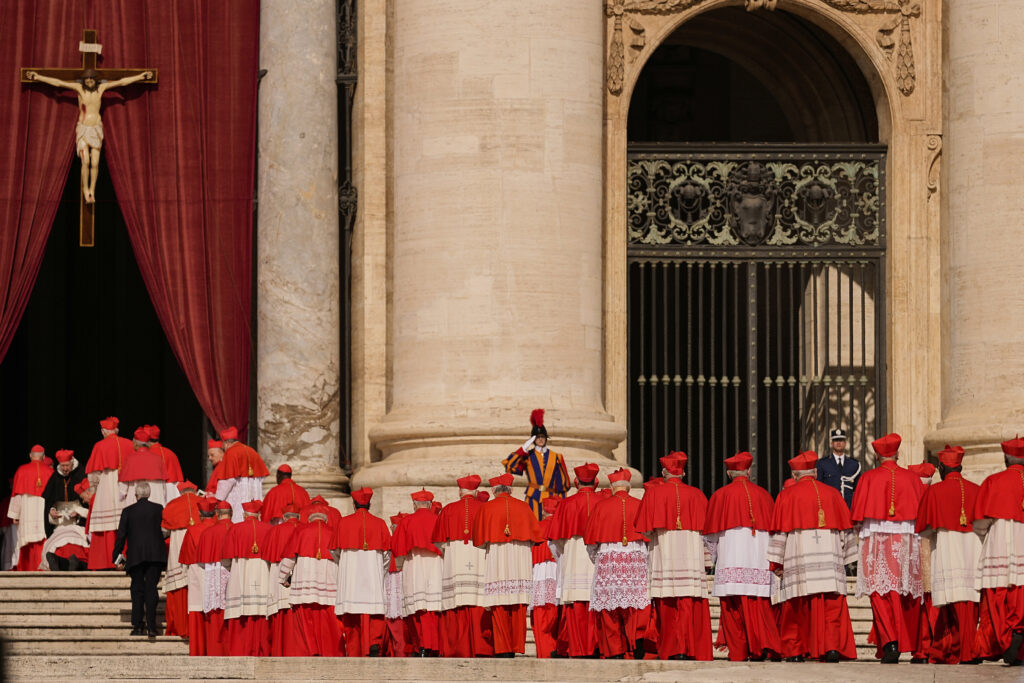The ‘Asian Francis’ — a Karaoke and TikTok Sensation — Emerges as a Leading Candidate To Be the Next Pope
Black smoke rises from the Sistine Chapel, meaning that no pontiff has been chosen after the first vote.

Among those secluded at the Sistine Chapel and its environs during the papal conclave to select the successor to Pope Francis — the first day brought a plume of black smoke, meaning that no pontiff has been selected — is a Filipino candidate, Luis Antonio Cardinal Tagle.
Cardinal Tagle, sometimes called the “Asian Francis” for his welcoming mien and attention to the poor, would be the first prince of the church from Asia to sit the throne of St. Peter. His elevation could mean a pontificate pointed to the Pacific.
Cardinal Tagle, a former archbishop of Manila, has for the past half-decade led the Vatican’s Dicastery for Evangelization, which directs the church’s missionary activities. If he becomes the next bishop of Rome, the papacy’s attention would likely swivel even further in the direction of the developing world.
The cardinal, whose nickname is “Chito,” is 67 — young for a papabile, or potential pope. That could work against him, as his fellow cardinals could be wary about the possibility of a long papacy to cement the Church on the leftward trajectory to which Francis was committed. When Cardinal Tagle was asked about the possibility of the papacy in 2015, he reflected: “I cannot even manage my life. How can I imagine a worldwide community?”
Cardinal Tagle is also known as something of a performer. He is active on TikTok and one historian at La Salle University, ichael Xiao Chua, tells the Guardian, “When he speaks and gives lectures he’s not the usual, formal priest. He sings. He’s a Filipino. He is a karaoke priest.” Karaoke, called “videoke,” by Filipinos, is something of a national pastime. The Philippines, along with India, accounts for a large share of Asia’s Catholics.

Cardinal Tagle has come under some scrutiny for a propensity to visit gambling dens. One hostile profile in the Italian press calls him “the cardinal who loves to visit the casino,” though that aspersion could owe more to Cardinal Tagle’s positions on, say, gay rights — he has lamented “harsh words” against gay Catholics. Further lines of criticism are that he has been less than crystal clear in denouncing both sexual abuse and the human rights violations of his country’s former president, Rodrigo Duterte.
The church’s fate in Asia is hardly incidental to its future. The ranks of the faithful on the continent have been swelling even as Europe’s Catholics face declining numbers and cavernous but empty cathedrals. Francis was the first supreme pontiff from South America, raising the possibility that the leadership of a faith that calls itself universal could increasingly reflect that global reach.
Like another frontier of the faith that could soon double as its heartland — Africa — Asia’s Catholics could enjoy a growing influence in matters of doctrine. Eighty percent of Filipinos are Catholic, and the faith first came to the nation with the Spaniards in 1521. As a whole, Asian Catholics number some 121 million people, about 11 percent of the Church’s global ranks.
In the New Testament, Jesus says, “render unto Caesar what is Caesar’s,” but the relation between spiritual and political authority with respect to the church has been vexed since the religion’s early days. That was true of Francis’s relations with the Communist Party at Beijing who — officially at least — have inherited Marx’s and Lenin’s antipathy toward faith as an “opiate of the masses.”
Still, the Vatican under Francis reached an accord with Beijing in 2018 with respect to the appointment of bishops. The Holy See describes that agreement, whose terms have not been disclosed, as “not political but pastoral, allowing the faithful to have bishops who are in communion with Rome but at the same time recognized by Chinese authorities.” The deal was made by the Vatican’s secretary of state, Pietro Cardinal Parolin, who oddsmakers have as the favorite to be the next pope.
The arrangement, though, allowed the Communist Party some say in the creation of high prelates. It also was marked by China’s Catholic church pledging loyalty to the Communist Party. The church vowed to “persevere to walk a path suited to a socialist society, under the leadership of the Chinese Communist Party” and swore fealty to “the motherland.” Relations between Communist China and the Philippines are tense due to, among other causes, territorial disputes in the South China Sea.
A sports betting community platform, OLBG, reckons that Cardinal Tagle is the second most likely contender to succeed Francis, with a 20 percent chance to pull enough votes to serve as the next vicar of Christ.

